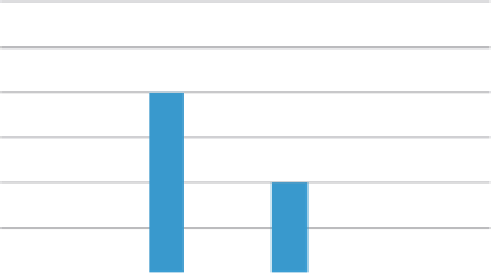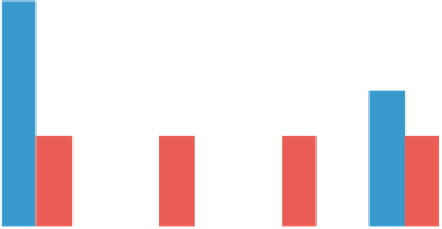Information Technology Reference
In-Depth Information
7
6
6
5
4
4
3
2
2
1
1
0
Did not see
checkout
link
Confused by
navigation
choices
Did not know
how to return
to shopping
Confused about
shipping
options
Figure 5.5 Example data showing the frequency of participants who experienced specific usability issues.
The use of severity ratings with this type of analysis is useful in a couple of
ways. First, you could use the severity ratings to focus your analysis only on
the high-priority issues. For example, you could report that there are five out-
standing high-priority usability issues. Furthermore, the percentage of partici-
pants who are experiencing these issues is decreasing with each design iteration.
Another form of analysis is to aggregate all the high-priority issues to report the
percentage of participants who experienced any high-priority issue. This helps
you see how overall usability is changing with each design iteration, but it is less
helpful in determining whether to address a specific usability problem.
5.4.4 Issues by Category
Sometimes it's helpful to know where to focus design improvements from
atacticalperspective.Perhapsyoufeelthatonlycertainareasoftheproduct
are causing the most usability issues,
such as navigation, content, termi-
nology, and so forth. In this situation,
it can be useful to aggregate usability
issues into categories. Simply examine
each issue and then categorize it into
a type of issue. Then look at the fre-
quencies of issues that fall into each
category. Issues can be categorized in
many different ways. Just make sure
the categorization makes sense to you
and your audience, and use a lim-
ited number of categories, typically
three to eight. If there are too many
categories, it won't provide much
direction.
Figure 5.6
provides an
example of usability issues analyzed
by category.
6
5
5
4
4
3
3
2
2
2
2
2
2
1
0
Navigation
Terminology
Content
Functionality
Design 1
Design 2
Figure 5.6 Example data showing the frequency of usability issues
categorized by type. Note that both navigation and terminology issues were
improved from the first to the second design iteration.














Search WWH ::

Custom Search